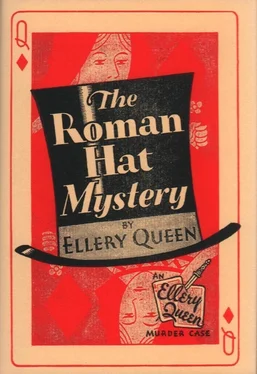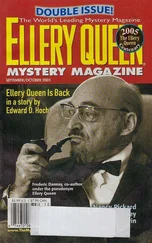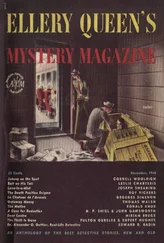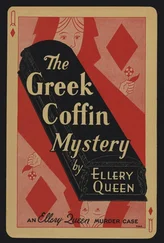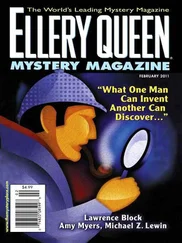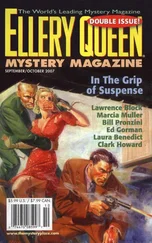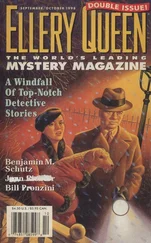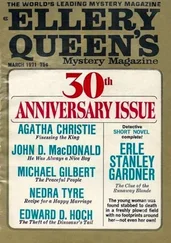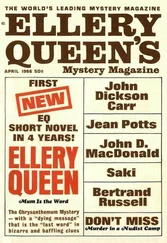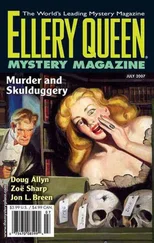“But mark this point. If it was blackmail — as Ellery and I eventually decided, since it seemed the most likely possibility — there were most certainly some papers floating about in Field’s possession which would be enlightening, to say the least. We knew that Morgan’s papers existed. Cronin insisted that the papers for which he was looking were about somewhere. So we had to keep our eyes constantly on the alert for papers — tangible evidence which might or might not make clear the essential circumstances behind the crime.”
“At the same time, in the matter of documents, Ellery was piqued by the great number of books on handwriting analysis he found among Field’s effects. We concluded that a man like Field, who had blackmailed once to our knowledge (in the case of Morgan) and many times to our suspicions; and who was keenly interested in the science of handwriting, might have been a forger to boot. If this were true, and it seemed a plausible explanation, then it probably meant that Field made a habit of forging the original blackmail papers. The only reason he could have for doing this, of course, would be to sell the forgeries and keep the originals for further extortion. His association with the underworld undoubtedly helped him master the tricks of the trade. Later, we discovered that this hypothesis was true. And by that time we had definitely established blackmail as the motive of the crime. Remember, though, that this led us nowhere, since any one of our suspects might have been the blackmail victim and we had no way of telling who it was.”
The Inspector frowned, settled back into his seat more comfortably,
“But I’m tackling this explanation the wrong way. It just goes to show you how habit will take hold of a man. I’m so accustomed to beginning with motive... However! There is only one important and central circumstance which stands out in the investigation. It was a confounding clue — rather, the lack of a clue. I refer to the missing hat...”
“Now the unfortunate thing about the missing hat was that we were so busy pressing the immediate inquiry at the Roman Theatre on Monday night we couldn’t grasp the full significance of its absence. Not that we weren’t bothered by it from the beginning — far from it. It was one of the first things I noticed when I examined the body. As for Ellery, he caught it as soon as he entered the theatre and bent over the dead man. But what could we do? There were a hundred details to take care of — questions to ask, orders to give, discrepancies and suspicious discoveries to clean up — so that, as I say, we inadvertently missed our great opportunity. If we had analyzed the meaning of the hat’s disappearance then and there — we might have clinched the case that very night.”
“Well, it hasn’t taken so long after all, you growler,” laughed Sampson. “This is Wednesday and the murder was committed a week ago Monday. Only nine days — what are you kicking about?”
The Inspector shrugged. “But it would have made a considerable difference,” he said. “If only we had reasoned it out — Well! When finally we did get around to dissecting the problem of the hat, we asked ourselves first of all: Why was the hat taken? Only two answers seemed to make sense: one, that the hat was incriminating in itself; two, that it contained something which the murderer wanted and for which the crime was committed. As it turned out, both were true. The hat was incriminating in itself because on the underside of the leather sweatband was Stephen Barry’s name, printed in indelible ink; and the hat contained something which the murderer very emphatically wanted — the blackmail papers. He thought at the time, of course, that they were the originals.
“This did not get us very far, but it was a starting point By the time we left Monday night with the command to shut down the theatre, we had not yet found the missing hat despite a sweeping search. However, we had no way of knowing whether the hat had managed in some mysterious manner to leave the theatre, or whether it was still there though unrevealed by our search. When we returned to the theatre on Thursday morning we settled once and for all the question of the location of Monte Field’s pesky topper — that is, negatively. It was not in the theatre — that much was certain. And since the theatre had been sealed since Monday night, it follows that the hat must have left that same evening.”
“Now everybody who left Monday night left with only one hat. In the light of our second search, therefore, we were compelled to conclude that somebody had walked out that night with Monte Field’s hat in his hand or on his head, necessarily leaving his own in the theatre.”
“He could not have disposed of the hat outside the theatre except when he left at the time the audience was allowed to leave; for up to that time all exits were guarded or locked, and the left-hand alley was blocked first by Jess Lynch and Elinor Libby, next by John Chase, the usher, and after that by one of my policemen. The right-hand alley, having no exit other than the orchestra doors, which were guarded all night, offered no avenue of disposal.”
“To go on with the thought — since Field’s hat was a tophat, and since nobody left the theatre dressed in a tophat who was not wearing evening clothes — this we watched for very closely — therefore the man who took away the missing hat must have been garbed in full dress. You might say that a man planning such a crime in advance would have come to the theatre without a hat, and therefore would have none to dispose of. But if you will stop to think, you must see that this is highly improbable. He would have been quite conspicuous, especially while entering the theatre, if he went in minus a tophat. It was a possibility, of course, and we kept it in mind; but we reasoned that a man working out such a consummate crime as this would have shied from taking any unnecessary chance of being identified. Also, Ellery had satisfied his own mind that the murderer had no foreknowledge of the Field hat’s importance. This made still more improbable the possibility that the murderer arrived without a hat of his own. Having a hat of his own, he might have disposed of it, we thought, during the first intermission — which is to say, before the crime was committed. But Ellery’s deductions proving the murderer’s lack of foreknowledge made this impossible, since he would not have known at the first intermission of the necessity of doing away with his own hat. At any rate, I think we were justified in assuming that our man had to leave his own hat in the theatre and that it must have been a tophat. Does it follow so far?”
“It seems logical enough,” admitted Sampson, “though very complicated.”
“You have no idea how complicated it was,” said the Inspector grimly, “since at the same time we had to bear in mind the other possibilities — such as the man walking out with Field’s hat being not the murderer but an accomplice. But let’s get on.
“The next question we asked ourselves was this: what happened to the tophat which the murderer left behind in the theatre? What did he do with it? Where did he leave it?... I can tell you that was a puzzler. We had ransacked the place from top to bottom. True, we found several hats backstage which Mrs. Phillips, the wardrobe mistress, identified as the personal property of various actors. But none of these was a personally owned tophat. Where then was the tophat which the murderer had left behind in the theatre? Ellery with his usual acumen struck right at the heart of the truth. He said to himself, ‘The murderer’s tophat must be here. We have not found any tophat whose presence is remarkable or out of the ordinary. Therefore the tophat we are seeking must be one whose presence is not out of the ordinary.’ Fundamental? Almost ridiculously so. And yet I myself did not think of it.”
Читать дальше
